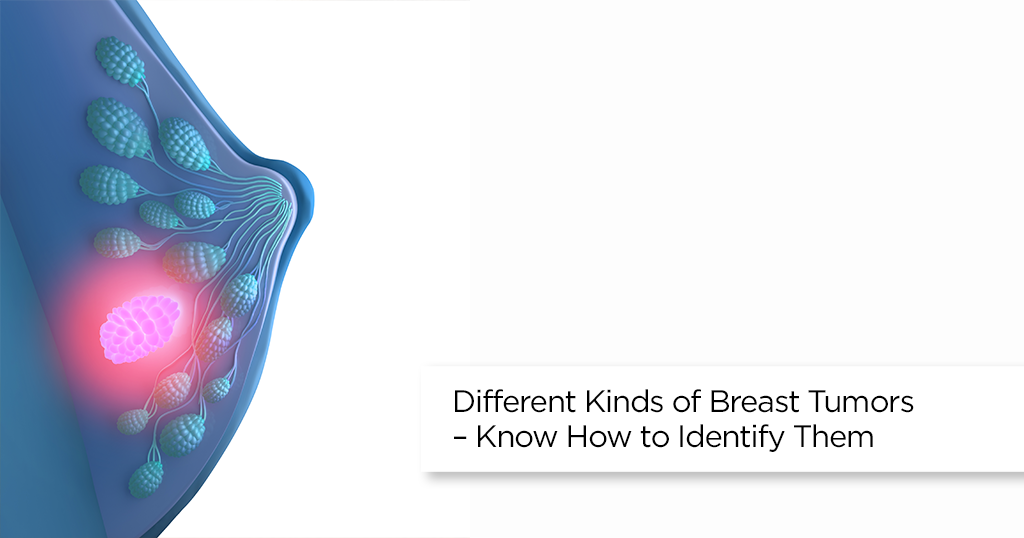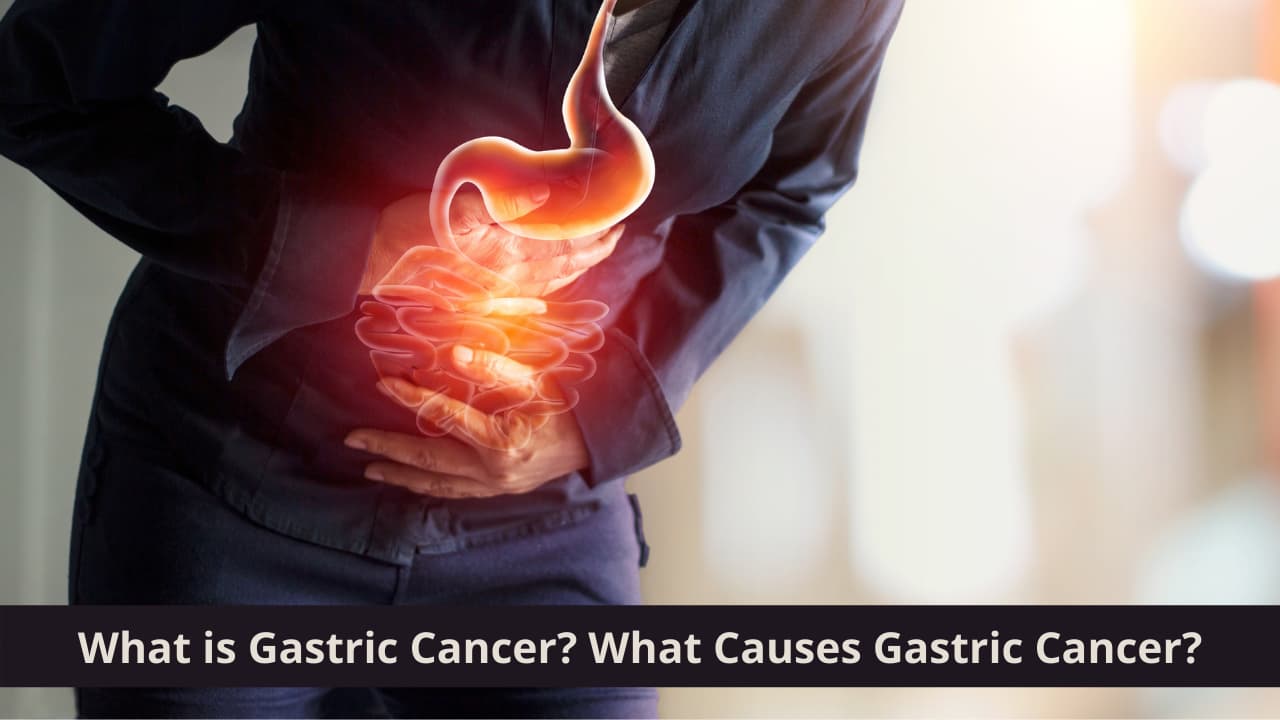Different Kinds of Breast Tumors – Know How to Identify Them


Overview
A tumor is a lump of abnormal tissue. In a healthy being, body cells grow, divide and replace each other as per the normal process of life. As the new cells begin to form, the old ones start to die. However, if there are too many new cells, an accumulation of the cells could form a tumor. A tumor could be located anywhere in the body and one in the breasts is known as breast tumor. Not all kinds of tumors are cancerous. So, let us take a look at the different types of tumors found in breasts and how to differentiate between them.
What are Breast Tumors?
Tumors form when cells reproduce too quickly and can vary in size from tiny nodules to large masses. Tumors found in the breasts can either be benign i.e. non-cancerous or malignant i.e. cancerous. Benign tumors are usually left alone and not removed. However, if they start growing aggressively and cause pain by pressurizing surrounding organs, the tumor is removed. Malignant tumors, on the other hand, are life-threatening and aggressively damage surrounding tissues. The cancer cells of the tumor could start spreading to other parts of the body and need to be stopped. Malignant breast tumors are graded according to a tumor grading system of 1 to 3 depending on its mutation severity and aggressiveness. Low grade (1) indicates well-differentiated cancerous cells; intermediate grade (2) indicates moderately differentiated and high grade (3) indicates poorly differentiated cancerous cells. These tumor grades help to determine the best treatment plan and a better chance at full recovery.
Types of Breast Tumors?
Broadly saying, tumors can either be malignant or benign. But then there are several different types under these two broad headers. However, most of the breast lumps are of the benign kind.
Benign types of tumors can be further categorized as:
- Fibrocystic breasts: Fibrous breast tissue, mammary glands and ducts react adversely with the normal hormones secreted during ovulation and results in the formation of fibrous lumps and numerous, tiny, multiple cysts i.e. fluid-filled pockets.
- Fibroadenomas: These benign tumors are nothing but solid lumps formed of fibrous and glandular tissue. These are round, rubbery and move freely in the breasts when pushed.
- Simple cysts: These are benign fluid-filled pockets or sacs and generally occur in both the breasts. They can be single or multiple.
- Intraductal papillomas: These are small, wart-like and grow in the mammary duct lining near the nipples.
- Traumatic fat necrosis: This happens when there is a trauma i.e. sudden injury or surgery to your breast. It leads fat to form in round, single, painless, hard lumps.
Malignant types of tumors are:
-
Ductal carcinoma in situ
Here, the tumor is confined to the milk duct and is considered to be the earliest form of breast cancer.
-
Lobular carcinoma in situ
In this type, the abnormal cells are found only in the lobules. It can be a potential marker for breast cancer later.
-
Infiltrating ductal carcinoma
Here, the cancer starts from the milk duct and invades the surrounding fatty tissue of the breast. This is considered to be the most common form of breast cancer.
-
Invasive lobular carcinoma
The cancer in this specific type starts in the lobules and spreads to other tissues and body parts.
-
Inflammatory breast cancer
This occurs when abnormal cells form a tumor and block lymphatic vessels in the skin of the breast.
Symptoms of Breast Tumors
The symptoms of benign and malignant tumors are often similar. Depending on the type of tumor, the symptoms are experienced. The common symptoms for the different kinds of tumors are:
- Fibrocystic breasts: Breast discomfort and tenderness. Small lumps. Swelling increases right before menstruation. Can be extremely painful to some.
- Fibroadenoma: Well-rounded, smooth, rubbery, solid lumps. They are painless and may disappear on their own. When touched, they move freely.
- Breast cysts: They are generally round, soft grape like, with distinct edges, tiny or big, and may be painful only if it is large or grows during the menstrual cycle.
- Breast cancer: During the early stages, the symptoms are not quite noticeable. However, with time, you can feel a thickening or firm lump, size or shape of the breast may change, dimpling in the breast skin, nipple may turn inwards and even turn red, swollen and scaly. Also, nipple discharge, either bloody or clear is common.
Causes of Breast Tumors
There are different causes and risk factors which could form benign or malignant tumors in a woman’s breasts. These include:
Fibroadenomas: These are solid lumps of fibrous and glandular tissue and generally occur in women aged between 18 and 35. They are also more common in women of African-American descent.
Fibrocystic changes: These changes in breasts are caused due to changes in your hormones during menstrual cycles. These are due to an exaggerated response of your breast tissues to changes in ovarian hormones. They are mostly found in women aged from 35 to 50.
Intraductal papillomas: These wart-like growths are generally found in women aged from 30 to 50.
Traumatic fat necrosis: Theses are caused due to an injury to the breast, even if you do not remember it happening.
Breast cancer: Though the exact cause is unknown, there are multiple risk factors. Women over the age of 50, being African-American, obesity, dense breasts, personal history of cancer and radiation therapy, first degree relative having breast cancer, if periods start before age 12 and do not stop till 55, drugs like diethylstilbestrol, or even certain genes like BRCA1 and BRCA2 increases the risk of breast cancer.
Treatment for Breast Tumors
If the diagnosis and tests give results that you have a tumor, your doctor will develop a treatment plan for you. This will depend on the type of tumor you have, the size, location and the extent of the diseases. Your age and general health are other factors which are taken into account. Modes of treatment include:
Benign tumors: Fibrocystic breast changes do not generally require any treatment. The doctor may suggest therapies which help with monthly tenderness. Large, painful simple cysts are treated via fine needle aspiration and fluid is drawn out. Fibroadenomas which are big or painful are removed with the help of surgery. Intraductal papillomas are also removed surgically.
Malignant tumors: Local treatment can be used to destroy cancer cells in a specific area like breasts. Surgery options include breast conserving surgeries or mastectomy i.e. removal of the entire breast. Radiation therapy, chemotherapy, hormone therapy and targeted drugs are other treatment options.
Prevention of Breast Tumors
To prevent both benign and malignant tumors from affecting your breasts, you need to ensure that you keep your breasts in good health. Also, general body health is equally important. You could do so by:
- Performing monthly breast self-examinations
- Taking part in yearly screening mammograms
- Keeping a track and getting educated about your family healthy history
- Healthy lifestyle changes like maintaining healthy body weight, staying active, limiting alcohol intake etc.
- Restricting hormone therapy after attaining menopause
The longer you breastfeed, the better for your breasts
Conclusion
So, it is very important to clearly inspect your breasts for any changes from time to time. If you discover any new breast changes, you need to consult your doctor. Make sure to tell your doctor every detail about your own as well as family’s health history. Perform a mammogram, ultrasound and other tests as necessary and your healthcare provider will ensure that you receive the best treatment.
© Copyright 2024. Apollo Hospitals Group. All Rights Reserved.
 +91 8069991061
Book Health Check-up
Book Health Check-up
Book Appointment
Book Appointment
+91 8069991061
Book Health Check-up
Book Health Check-up
Book Appointment
Book Appointment







